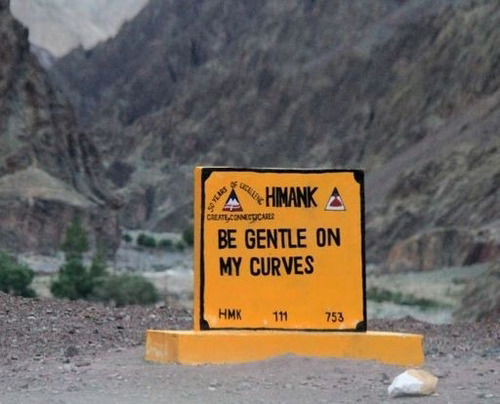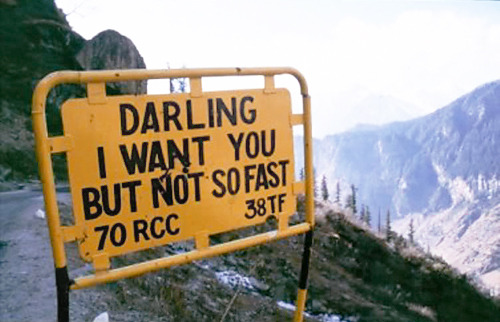Link
For it is one of the lessons of Marxist art theory that no artistic gesture, on its own, can be intrinsically radical or anti-capitalist. What appears at one juncture to be radically opposed to the values of art under capitalism often later appears to have represented a development intrinsic to its future development, for the simple reason that without changing the underlying fact of capitalism, you cannot prevent innovations in art from eventually being given a capitalist articulation.
Two examples will suffice here. In Weimar Germany, it was still considered wildly radical to devote oneself as an artist to creating well-designed and affordable art objects for the common person rather than for the elite. Inspired by Soviet Productivism, this valorization of art for all informed the Bauhaus—which later became the basic influence on industrial design, that is, the application of artistic principles to consumer goods. What seemed practically socialist in its day is the ideology of Ikea.
In the 1960s, the first generation of Conceptual artists set out deliberately to make art that could not be owned or shared in the same way as conventional object-based work. Yet today, when computers send image files across the world in seconds and 3-D printing is becoming mainstream, it may be difficult to recover the radical charge of Sol LetWitt’s provocation of creating instructions for other people to draw his murals rather than painting the murals himself. As for the Conceptual ideal of valorizing ideas themselves as works of art, in an era when giant corporations wage war over intellectual property and try to patent intangible concepts, it hardly seems radical.
Always both validating and disheartening to see the central, heavily belaboured thesis of a long thing you’ve been working on reduced to a few pithy, much more elegant sentences in someone else’s article.
20 notes
·
View notes
Photo


Steve Lambert will talk to you about anything.
I want to talk Steve Lambert about anything
26 notes
·
View notes
Photo

54 notes
·
View notes
Conversation
Growing Dialogue: Growing Dialogue is a series of moderated online debates among thought leaders in social practice.
On August 9, 2013 Deborah Fisher, Executive Director of A Blade of Grass posted a link to Ben Davis’s article, “A Critique of Social Practice Art: What does it mean to be a political artist?” which appeared in issue #90 of the International Socialist Review on her Facebook page. To her pleasant surprise, it generated a flurry of responses and counter-responses that began to gel together into a full-fledged debate on the value and practice of socially engaged art.
Deborah Fisher: Well…I don’t think Nato Thompson would suggest that an artistic gesture can be intrinsically radical or anti-capitalist. But Davis is right to ask what separates SEA (Socially Engaged Art –ed.) from other types of social action and social work. Why is its status as art important? What does calling it art accomplish?
Nato Thompson: Thanks Deborah. I must say that I have to make it clear, that issue of whether or not something is art is hardly the central concern. That is not ultimately what is at stake. For many artists and non-artists, the concerns are much broader. I certainly have little interest in calling most stuff art or not. That category is contingent and contextual. You know, I think the mistake is to position the idea of art as something that intrinsically exists. It is a myopic discussion to reduce SEA to the consideration of “Is it art or not”. That debacle is as old as the sage Brecht vs. Adorno battles. I think that, if anything, socially engaged art points out the obvious fact that there is a crisis of cultural production. I don’t think we benefit from calling this stuff art. What we can do is realize that the social terrain is shifting and people are using culture in new ways to do stuff in the world (this goes much further than art). Davis makes it seem as though only SEA suffers from the need for funding and funders… Isn’t this the crisis of contemporary life writ large? Is there a part of living that is somehow excluded from this obvious dilemma? Are there other, more pure forms of art that he has in mind that somehow escape this situation? Is Occupy somehow removed from the same problematics? As opposed to wondering whether or not something is art, we must try to tease out how to navigate the crisis that is the incorporation of cultural production into the very machinations of power. SEA isn’t the solution, but it does point toward an exacerbation of the problem. Pretending that one can go back to business as usual (which is at heart what Davis is opining) adds nothing to the conversation.
Deborah Fisher :I think there’s a difference between asking if SEA is art or not, and asking what calling something art accomplishes and whether the designation of art is useful.
Whether you want to call it art or not, and I get why you don’t, SEA projects are often categorized and funded as art. With this categorization comes a specific relationship to power; a pool of established funding and other resources; a set of expectations about both meaning and efficacy… Etc.
You’re complicit in this. Creative Time is an arts organization. Immigrant Movement International is funded as an art project. So am I–ABOG is an arts funder, we are going to give 70% of our grant funds out as fellowships to individual artists next year–this empowerment of individuals doesn’t really happen to the degree it does in the arts in other funding landscapes.
I agree that whether or not something is art has been a boring, unsatisfying question for a very long time, and I enjoy and appreciate your focus on how we live in relationship to power. I think it’s a useful idea. For that matter, I also think that Davis is presenting a laundry list of issues that kind of traps cultural workers into thinking that power is always bad rather than shifting the conversation.
But you know, his list is a lot like the list of issues we’ve been kicking around all summer at ABOG HQ as we work toward rolling out this fellowship program.
I don’t think my organization can take the political nature of this work seriously, fund it thoughtfully, and meaningfully assess what these projects can and cannot do unless we are fully accountable to the power we have as funders, and the way art functions not only within a marketplace but as a symbol that distances the powerful from their own ideology.
And I believe there are real opportunities to be found to expand this dialogue past SEA as social work if we can be clear about the way art shapes our expectations of impact, and what we can give a larger discussion about how arts philanthropy works.
This is getting really long, but basically I don’t think ABOG can get to understanding or measuring anything resembling your “how we live” perspective without deploying art as a framing device because of the real limitations Davis addresses in his article.
Check out more of the discussion at: http://www.abladeofgrass.org/blog/ablog/2013/sep/18/growing-dialogue-what-effectiveness-socially-engag/
#growing dialogue#a blade of grass#spa#social practice#nato thompson#social practice art#art#discussion#article
0 notes
Photo



Opens tomorrow! “Social in Practice: The Art of Collaboration,” curated by art historian Deborah Willis and her son, artist Hank Willis Thomas.
“Focused on the use of community collaboration and activism in art making, the multimedia exhibition features artists, collectives and organizations based in New York and around the world.”
30 notes
·
View notes
Photo





We had an incredible growing season this year. It was our first year and we didn’t know if anything would grow, if anyone would join us, or if the area would just fill with trash and rats. Truly, the opposite occurred. We made friends and built a community around the garden, we talked about food justice, we grew delicious, healthy food, and we ate it together and shared it with others.
A few weekends ago we got together to celebrate our accomplishments. We pulled the last few sweet potatoes, cut some kale, turned the soil and dreamed about next year. We’re not hibernators though. In the winter we’ll kick into high gear, strategizing about how to get healthy food and equality to more people.
75 notes
·
View notes
Video
youtube
A discussion between the founders of Spa World and Corcoran BA and MFA grad students.
What can be classified as Social Practice Art and examples of the 5 different categories of SPA .
Social Practice Art= SPA
3 notes
·
View notes
Photo


Speed kills
546K notes
·
View notes
Photo

The Outings project encourages members of the public to liberate famous paintings from their gilt frames in galleries and set them free on the streets. Using smartphones and printers, not Stanley knives.
Initiated by Julien de Casabianca, French artist and filmmaker. Example here in Dijon.
218 notes
·
View notes
Photo

BONE LIBRARY
Sarah-Jane Norman
An evolving work by indigenous Australian performance and installation artist Sarah-Jane Norman, bone library considers the living essence of so-called “dead” languages.
For 3 days, the artist will inhabit a room in the Think Tank where she will set about the task of hand-engraving a complete dictionary of the languages of the Gadigal and Cammeraygal people, the lost pre- Colonial languages of the Sydney region, onto the prepared bones of sheep and beef cattle. The bones of these totemic beasts of European pastoralism are repurposed as vessels of tactile “memorial”, forming the basis of a layered and haunting reflection on the tension between western taxonomy and its modes of preservation, and the more visceral terrain of cultural grief.
As the culmination of Bone Library, artist Sarah-Jane Norman invites you to a special ceremony. Following the live inscription of bones across SPILL Festival, the artist invites audiences to become temporary private trustees of the collection – individual bones will be relinquished into the temporary care of individual audience members, who agree to hold them until such time as the complete collection is recalled. This will take place in the context of a handover ceremony, conducted with the blessing of community Elders.
Text: SPILL website
Photo: Heidrun Lohr
3 notes
·
View notes
Photo

It’s Art: An Army of Clones Jogs to Kraftwerk
58 notes
·
View notes
Photo

Yuri Suzuki Creates Hacked Instruments From Old Cell Phones And Tape Recorders
54 notes
·
View notes
Video
youtube
documentation from a recent project at berkeley
1 note
·
View note
Link
If social practice offers us anything, it openly asks not what kind of artist one wants to be but what kind of person one wants to be and how one wants their work to operate in the world. -Abigail Satinsky, Bad At Sports
8 notes
·
View notes
Video
youtube
Streamed live on Mar 21, 2013
Jen Delos Reyes discusses her work in social practice at the University of Windsor's School of Visual Arts. This talk is part of her collaborative project/exhibition The Social Practice Workbook (running from March 20 - April 7, 2013).
0 notes
Photo

Who do artists think they are? How do they command belief in their work? What myths do they enliven and reject? On Sunday author Sarah Thornton, along with Massimiliano Gioni, Andrea Fraser, and Laurie Simmons, will discuss Thornton’s new book 33 Artists in 3 Acts. Purchase tickets here.
66 notes
·
View notes
Link
"In a collaboration project with ten Non-Government Organizations from Yogyakarta supported by the Ford Foundation, we created for five villages a post earth quake relief program. This program—which included workshops, carnivals and performances—that was held from May 2007 till May 2008, was meant to re-vivid the performances and related visual arts in the traumatized areas."
0 notes